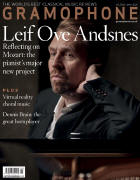Texte paru dans: / Appeared in: |
|
|
Outil de traduction (Très approximatif) |
|
|
Reviewer:
Charlotte Gardner Believe it or not, but after the violin, the instrument Vivaldi wrote the most concertos for was the bassoon. There are 39 concertos in total, of which 37 have survived in their entirety, and during a period when the bassoon was considered even less of a natural soloist than it is now. Clearly, though, there were bassoonists who inspired Vivaldi to lift it well out of the continuo section – artists such as Anton Möser in the Prague ensemble of Vivaldi’s patron Count Wenzel von Morzin (dedicatee of RV496 and a likely recipient of RV473 and 500, which were written on Bohemian paper), and also the Dresden court orchestra, with whom Vivaldi collaborated from 1716 onwards and which was known for its wind-playing. The result was a corpus of concertos that was revolutionary in terms of its vision for the instrument, milking its throatiest depths and its tenor heights, often via virtuosically wide and fast intervallic leaps, and its expressive range and articulation capabilities, from fast passagework and advanced staccato technique to poised arioso lyricism. On to the seven concertos we have here from Sergio Azzolini and his own L’Onda Armonica, and the first thing that strikes you is the sheer size of the ensemble: a healthy string section (nine violins alone), a wide assortment of plucked and keyboard continuo (lute, archlute, theorbo, harp, Baroque guitar, organ and harpsichord), and a substantial woodwind section that in RV479 expands to as many as three flautists, and in RV467 uses three oboists and three bassoonists; and for three concertos there’s the further dark colour of a fagotto grande. In fact it’s an ensemble large enough to be able to be split into two ‘instrumental choirs’ for RV497, and the result across the programme is a glorious noise, even if sometimes the definition is a bit smudgy as they resound through the huge space of Soresina’s Santuario di Ariadello. Ensemble highlights include the way harpist Elena Spotti rises up to engage Azzolini in conversation in RV486’s central Largo, sympathetically supported by Pablo Kornfeld on organ, and the jubilant flourish with which the preceding movement is rounded off. Also the all-out merriness and textural contrasts of the first movement of RV489 in F, over which Azzolini himself is equally enjoyable as he leads all this committed ensemble energy from his copy of a c1710 four-key instrument, tossing off the high-speed virtuosities with a characterful musicality and ease. Or, returning to the Largo of RV486, listen to the way his tone grows in dynamic intensity through his first longbreathed lyrical phrase, packing a serious punch for a line sung from the instrument’s lowest, darkest registers. I’m not sure that bassoon concertos will ever hold quite the same mass appeal as violin ones but Vivaldi’s do a great sales job for the instrument, and Azzolini has done a great sales job on Vivaldi. |
|




